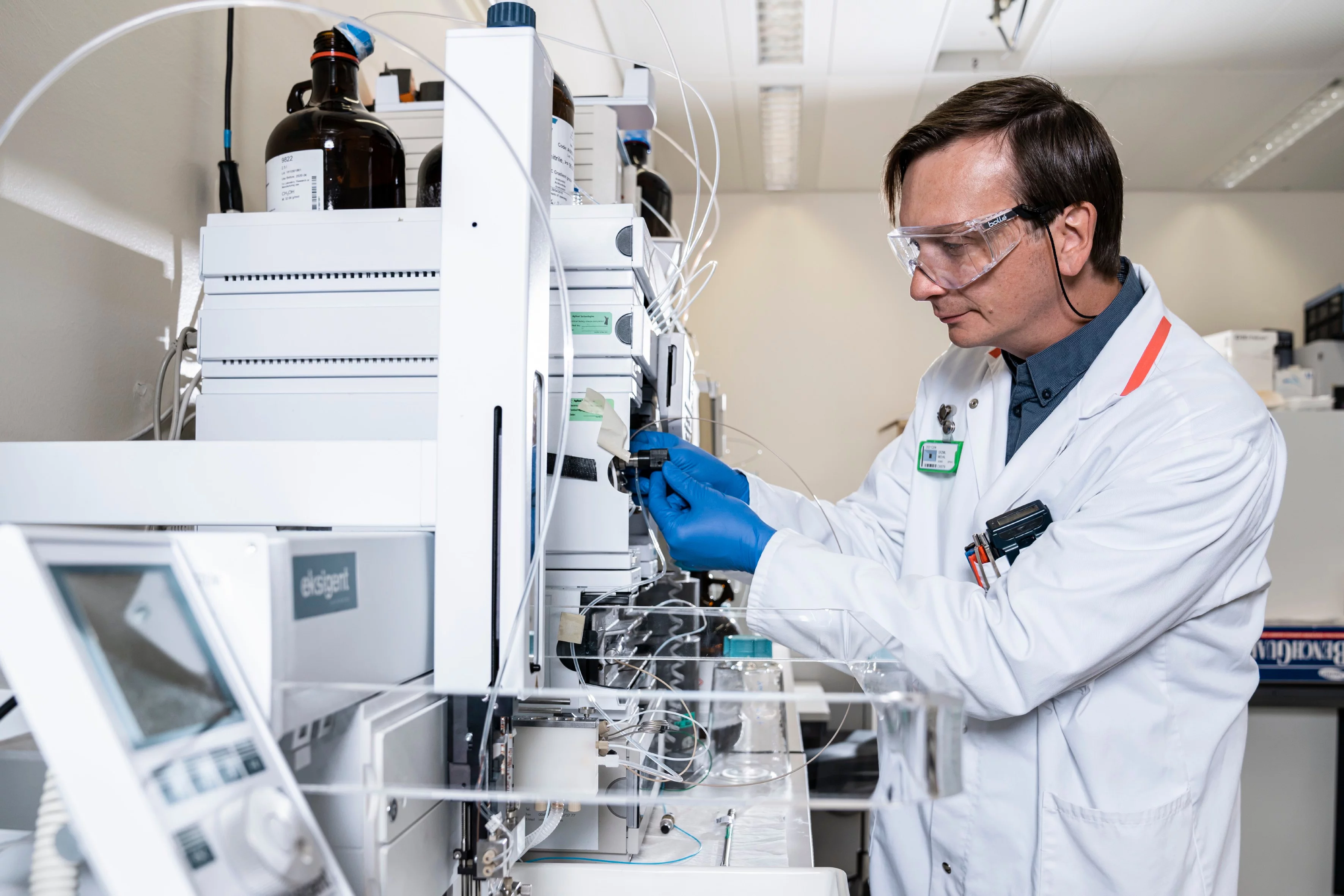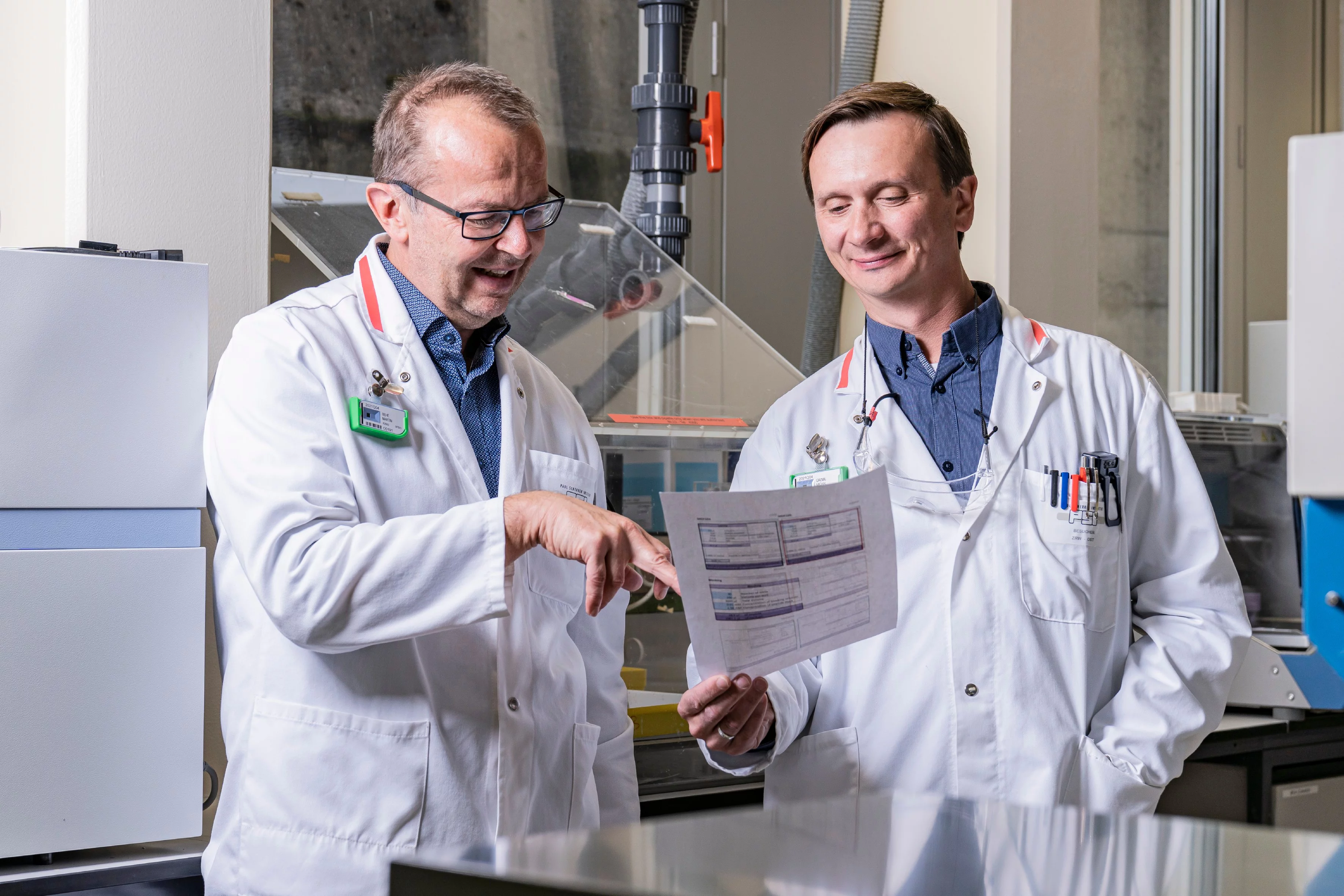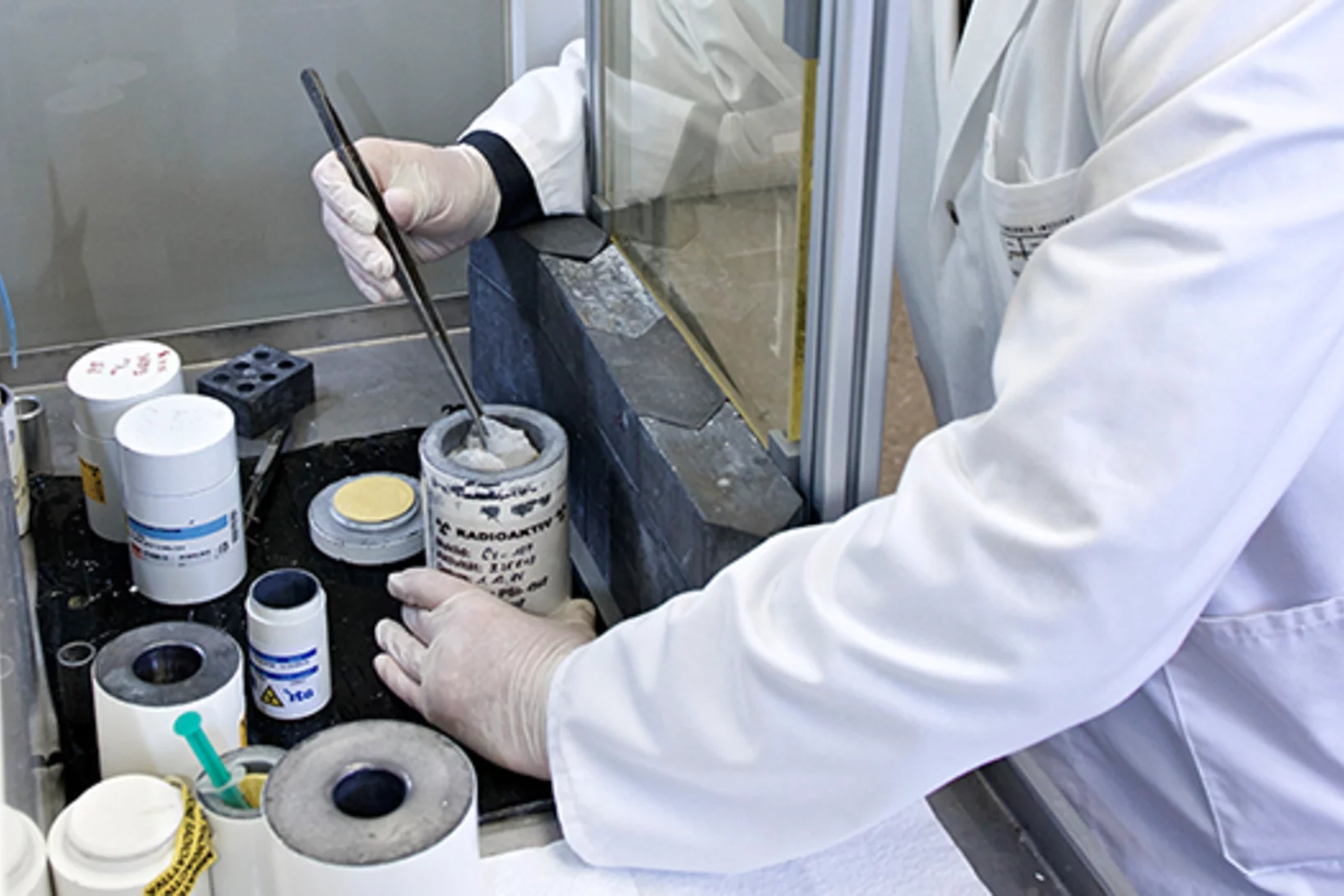Researchers at the Paul Scherrer Institute PSI have tested various methods to check how effective they are in combatting certain types of cancer. They found a combination of two preparations to be much more effective than treatment with just one of the two active substances. They have published their findings today in the medical journal Pharmaceutics.
A combination of an active substance based on rapamycin and a peptide coupled with the radionuclide lutetium can effectively inhibit tumour growth. This is the key result of a study conducted by researchers at the Paul Scherrer Institute working with colleagues at the University of Basel and ETH Zurich. The study builds on previous radiopharmaceutical research undertaken at PSI.
To treat tumours with radiopharmaceuticals, the researchers couple radionuclides with certain molecules that dock to tumour cells particularly well and are then absorbed by these cells. In this particular case they use mini-gastrin combined with the radionuclide lutetium-177. The radioactive mini-gastrin docks to a specific receptor located on the surface of the cancer cell’s membrane, from where the drug is transported inside the cell.
The problem is that part of the radiopharmaceutical which docks onto the receptor has been developed from gastrin, a natural substance found in the human body. It is usually responsible for releasing stomach acid to aid the digestion of food. Healthy gastric cells therefore also produce the receptor, so the radiopharmaceutical docks onto them as well. The healthy stomach cells also absorb the drug, so may be damaged as well.
Manipulating tumour cells
Michal Grzmil, a cancer biologist at the PSI Centre for Radiopharmaceutical Sciences, explains: "The idea behind the new combination therapy is that the rapamycin-based substance only manipulates the cancer cells so they produce more receptor molecules and thus absorb greater amounts of the radionuclide." The aim is to ensure that the dosage of the radiopharmaceutical absorbed via the stomach does not produce excessive side effects.
Having docked onto the cancer cell, the radiation from the lutetium destroys the cells’ DNA, in the best-case scenario killing off the cells and having a therapeutic effect on the tumour.
Although this type of therapy is already used in practice, this new discovery significantly improves its effectiveness. During their research, scientists discovered that when using a combination of the active substance rapamycin and the radiopharmaceutical, the level of radiation entering the tumour is much higher, while the level in the stomach stays the same. "We have determined that this enables us to inhibit tumour growth by roughly half compared with administering rapamycin on its own," says Martin Béhé, leader of the Pharmacology Group at the PSI Centre for Radiopharmaceutical Sciences.
Treating thyroid cancer
This method is particularly suitable for treating medullary thyroid cancer (MTC) and is currently the subject of clinical trials conducted in close collaboration Debiopharm International, a drug company based in Lausanne, and University Hospital Basel. MTC is the third most common type of thyroid cancer. Although it is fairly rare, accounting for less than ten percent of all thyroid cancers, it ranks among the particularly aggressive strains as it readily metastasises. Around a quarter of these tumours are down to hereditary factors, so that sometimes children or young adults are even affected.
Lutetium-177 offers several advantages
The isotope lutetium-177 offers several advantages for treating this type of tumour: it emits both beta and gamma radiation. The beta radiation only travels a few millimetres in the body. As soon as the radiopharmaceutical latches on, it can destroy the tumour directly without damaging the surrounding tissue. The gamma radiation, on the other hand, leaves the body again and can be detected and measured by a gamma camera. Based on these readings, the camera produces an image displaying the accumulation of the radioactive substance in the body and showing the spread of the medullary thyroid cancer.
"We still need to optimise the method through clinical trials," Martin Béhé says. But he is optimistic that these trials will corroborate the results to date and reckons the treatment will become widely available in a few years’ time.
Contact
Original publication
-
Grzmil M, Imobersteg S, Blanc A, Frank S, Schibli R, Béhé MP
Therapeutic response of CCKBR-positive tumors to combinatory treatment with everolimus and the radiolabeled minigastrin analogue [177Lu]Lu-PP-F11N
Pharmaceutics. 2021; 13(12): 2156 (8 pp.). https://doi.org/10.3390/pharmaceutics13122156
DORA PSI
More articles on this topic
About PSI
The Paul Scherrer Institute PSI develops, builds and operates large, complex research facilities and makes them available to the national and international research community. The institute's own key research priorities are in the fields of future technologies, energy and climate, health innovation and fundamentals of nature. PSI is committed to the training of future generations. Therefore about one quarter of our staff are post-docs, post-graduates or apprentices. Altogether PSI employs 2300 people, thus being the largest research institute in Switzerland. The annual budget amounts to approximately CHF 450 million. PSI is part of the ETH Domain, with the other members being the two Swiss Federal Institutes of Technology, ETH Zurich and EPFL Lausanne, as well as Eawag (Swiss Federal Institute of Aquatic Science and Technology), Empa (Swiss Federal Laboratories for Materials Science and Technology) and WSL (Swiss Federal Institute for Forest, Snow and Landscape Research). (Last updated in June 2025)




